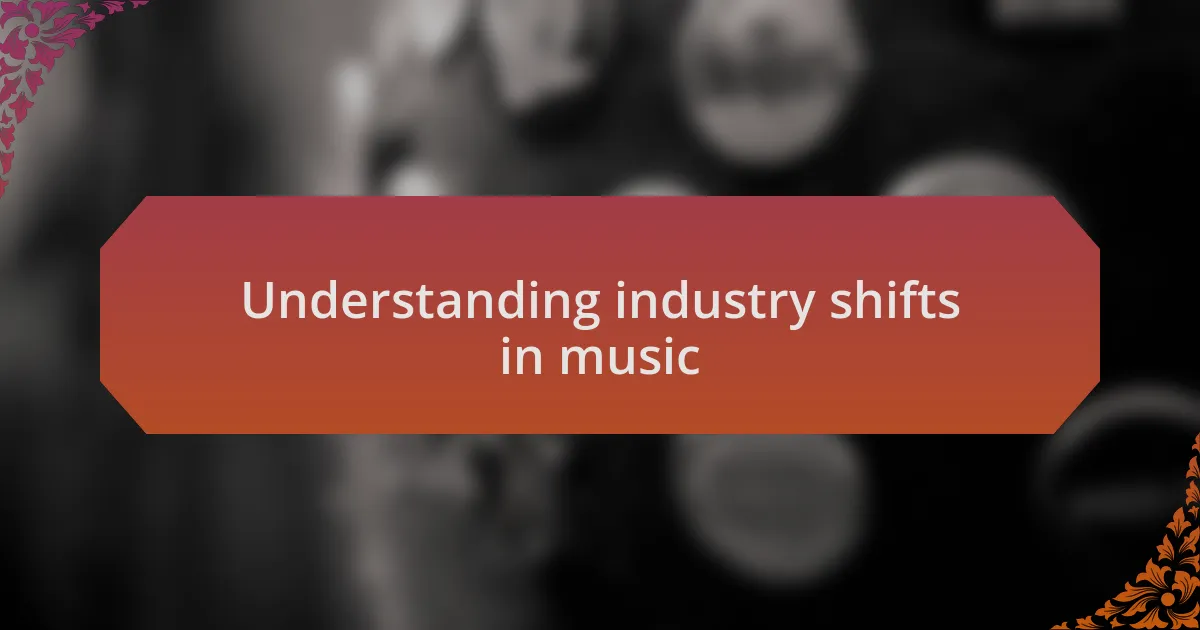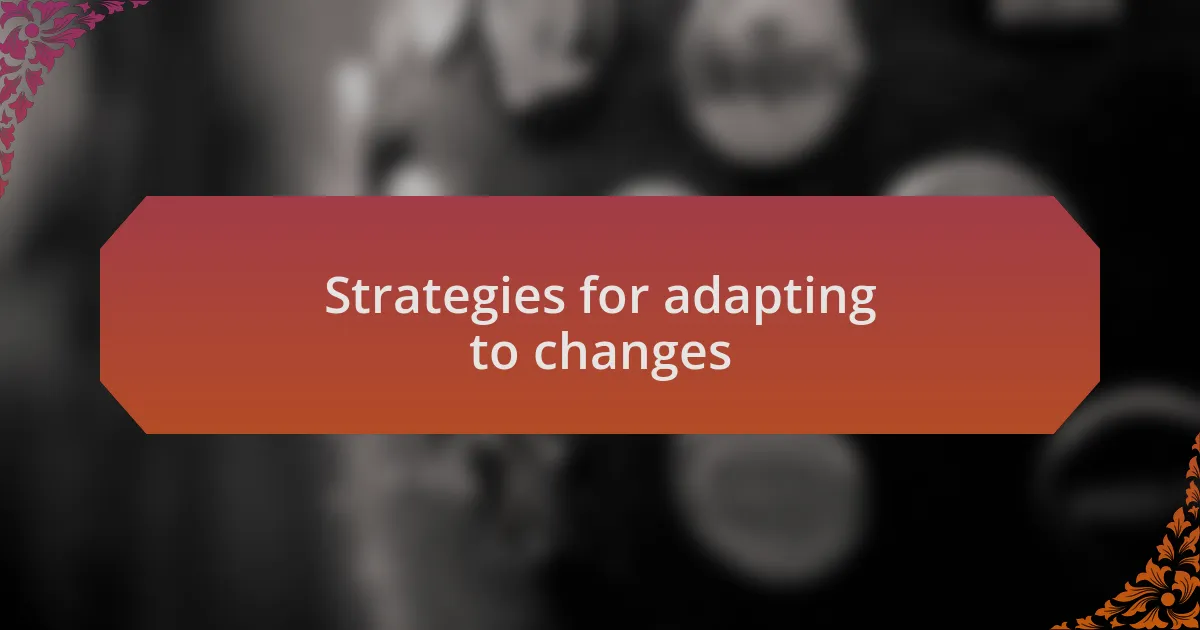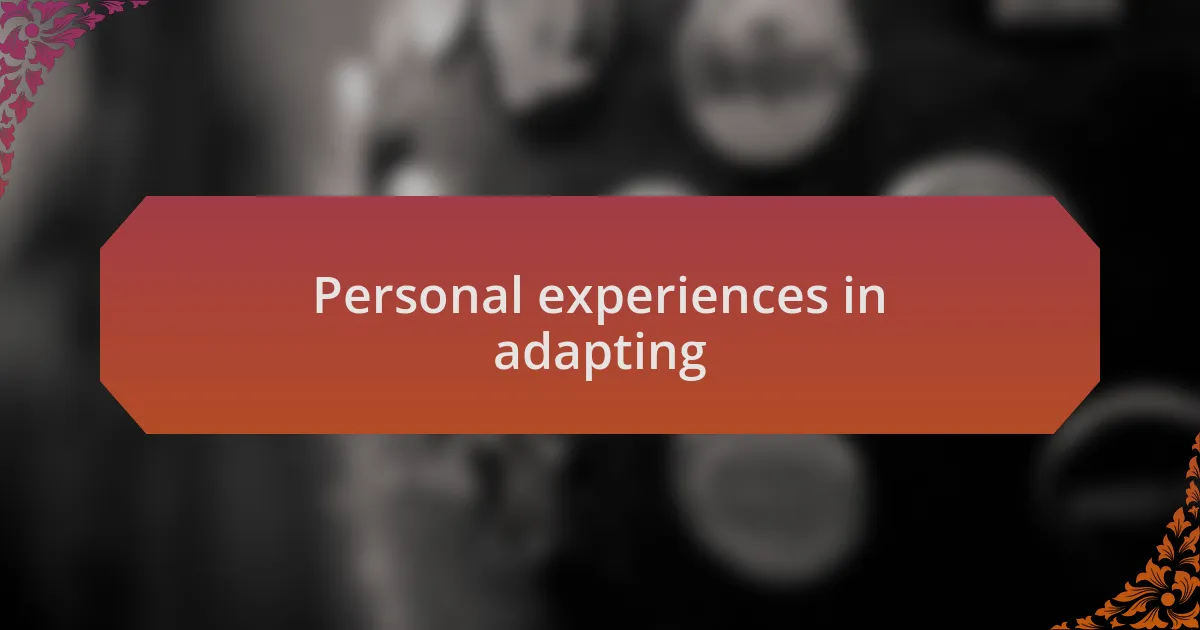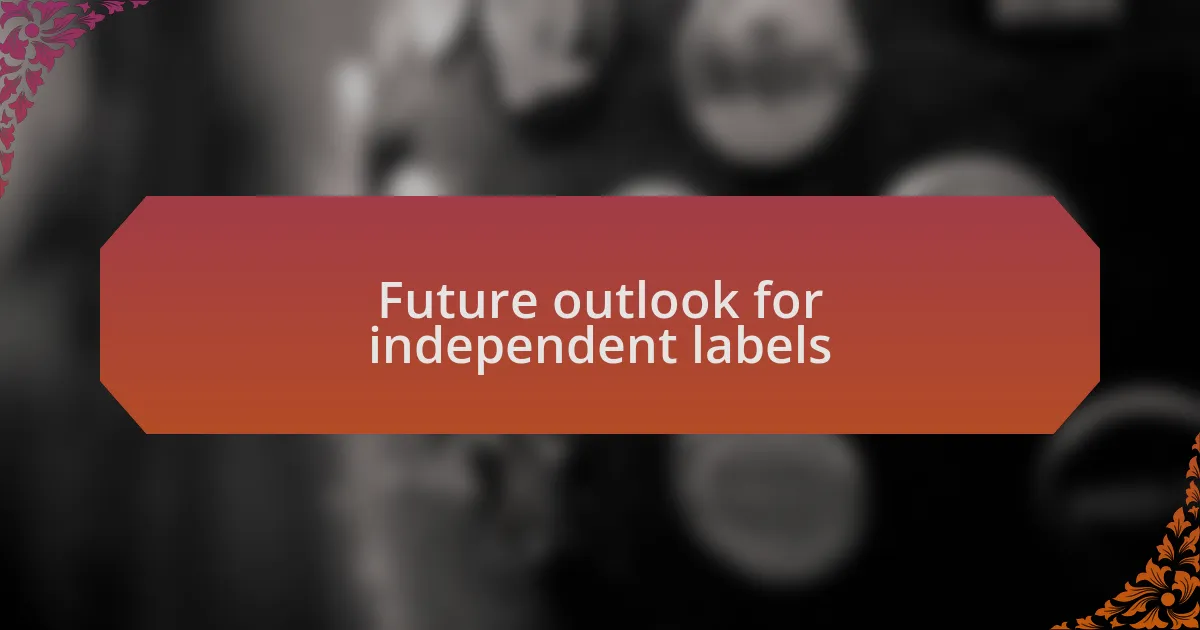Key takeaways:
- The transition from physical music formats to streaming has fundamentally changed distribution and audience engagement in the music industry.
- Adopting emerging technologies, such as analytics and social media, is vital for adapting to industry changes and understanding audience preferences.
- Collaboration and community-building among industry professionals can lead to innovative solutions during challenging times.
- The future of independent labels lies in empowering artists through direct-to-fan models and leveraging technology to enhance their creative output.

Understanding industry shifts in music
The music industry has always been a landscape of constant change, influenced by technology, culture, and consumer behavior. I remember when streaming services began to dominate the scene. It felt like one day we were pressing vinyl and the next, our music was just a click away. This transition not only shifted how we distribute music but also changed how we connect with our audience.
As I’ve navigated these changes, I’ve often asked myself how we can maintain authenticity in an era driven by algorithms. There was a time when album art and liner notes were key parts of the music experience, but now, I see many artists facing pressure to create catchy singles for quick plays. Personally, I’ve had to remind myself of the deeper connection music can foster.
Industry shifts can feel overwhelming, especially when every year brings new trends and technologies. It’s crucial to stay adaptable. For instance, I’ve witnessed firsthand how embracing social media can not only promote our artists but also build lasting relationships with fans. Through these experiences, I’ve come to appreciate that while the industry changes, the core of music—connection and expression—remains timeless.

Strategies for adapting to changes
One key strategy for adapting to industry changes is to actively engage with emerging technologies. When I first started using analytics tools to track listener behavior, I was amazed at how much clearer my understanding became of our audience’s preferences. It felt like having a backstage pass to their thoughts and feelings about the music. This data-driven approach has allowed me to tailor our promotions and even influence song releases, ensuring our label stays relevant in a fast-paced digital environment.
Another effective tactic involves fostering a culture of creativity. I recall a time when we were faced with a decline in physical product sales. Instead of panicking, we hosted brainstorming sessions with our artists, exploring unique ways to present their music. This not only resulted in innovative merchandise but also sparked new artistic collaborations. Have you ever wondered how collaboration can breathe new life into stagnant trends? By working together, we could reinvent our offerings and reignite excitement in our audience.
Lastly, building strong relationships with other industry professionals has proven invaluable. One of my favorite experiences was attending a music conference where I connected with fellow label owners who faced similar challenges. We shared insights and strategies that I wouldn’t have discovered alone. This sense of community can turn isolating experiences into collaborative problem-solving, reinforcing the idea that we’re all in this together. How do you maintain your network within the industry? Cultivating these relationships has certainly helped me keep my finger on the pulse of change.

Personal experiences in adapting
Adapting to industry shifts has often felt like navigating a stormy sea, but one experience stands out. I remember a particularly challenging period when new streaming services were gaining traction, threatening our existing distribution channels. Instead of resisting this change, I leaned into it. I reached out to those platforms, learned the ropes, and soon discovered the immense potential for our artists to reach new audiences. Have you ever felt that moment when embracing change turned panic into possibility? That realization transformed my perspective on adaptation.
One of my most profound adaptations came when I realized that fan engagement was evolving beyond just music consumption. I found myself experimenting with interactive content—like Q&As and live-streamed performances with our artists. Initially, the thought of stepping outside traditional methods was daunting. However, the genuine enthusiasm from fans during those events was electrifying. It made me think: how important is it to meet your audience where they are? This shift not only revitalized our connection with listeners but also fostered a deeper sense of community among our artists.
There was also a point when I had to rethink our marketing approach. After a disappointing album launch, I took a step back and evaluated the situation. Rather than fixating on what went wrong, I hosted a feedback session with the team and our artists. Listening to their insights felt liberating. They shared their thoughts on what resonated with fans in this new landscape. Inspired by this collective wisdom, we redesigned our strategy entirely. Have you ever found clarity in collaboration? This experience reinforced my belief that adaptability thrives in a supportive environment where every voice matters.

Lessons learned from industry shifts
One critical lesson I’ve learned through these industry shifts is the importance of flexibility. During a time when vinyl was making a comeback, I found myself in a dilemma. Our focus was primarily digital, but I decided to experiment with limited-edition vinyl releases for our artists. The incredible response from collectors taught me that sometimes, reviving the old can lead to fresh excitement. It begs the question: how often do we overlook opportunities in our pursuit of the latest trends?
Another eye-opening realization came when our social media strategies had to evolve rapidly. Initially, I approached them with caution, feeling overwhelmed by the fast-paced nature of platforms. However, as I began to genuinely engage with followers—responding promptly to comments and sharing more behind-the-scenes content—I noticed a marked uptick in engagement. The warmth of those exchanges made me ponder: are we too focused on selling, rather than connecting? This shift was not just a change in tactics; it became a philosophy of prioritizing relationships over mere transactions.
One of my more unexpected lessons stemmed from a festival performance that didn’t go as planned. I remember our artist standing alone after a lackluster turnout, and instead of sulking, we gathered feedback from those who did show up. Their candid insights not only helped us salvage the event but also sparked ideas for future marketing strategies. I learned that failure can be the best teacher if we’re open to listening. How many times have we let a single setback blind us to the potential for growth?

Future outlook for independent labels
When I look ahead at the future of independent labels, I see an evolving landscape ripe with possibilities. Streaming services continue to reshape how audiences discover music, allowing us to reach niche markets I never would have imagined. I remember a moment when we collaborated with a local artist who had a unique sound, and through targeted playlists, we found a whole community that resonated with their music. This experience made me realize that the future is about harnessing these platforms to highlight diverse voices that might have been overlooked before.
Moreover, the rise of artist-driven platforms is changing the game. As independent labels, we have the chance to empower artists to take control of their distribution and promotion. I recall our discussions about adopting direct-to-fan models, where artists interact with their audience and cultivate loyalty. It struck me then that our role is shifting from gatekeepers to facilitators. Isn’t it invigorating to think about how we can help artists shape their careers more autonomously?
I also can’t ignore the technological advancements on the horizon. Innovations in music production and distribution mean that aspiring artists can create high-quality recordings without breaking the bank. I remember mentoring a young musician who produced an entire EP on a simple setup at home. The excitement in their eyes when they shared their finished project was infectious. As independent labels, we must embrace these tools to stay relevant—not just to survive but to thrive. How can we leverage technology to amplify our artists’ voices even further?